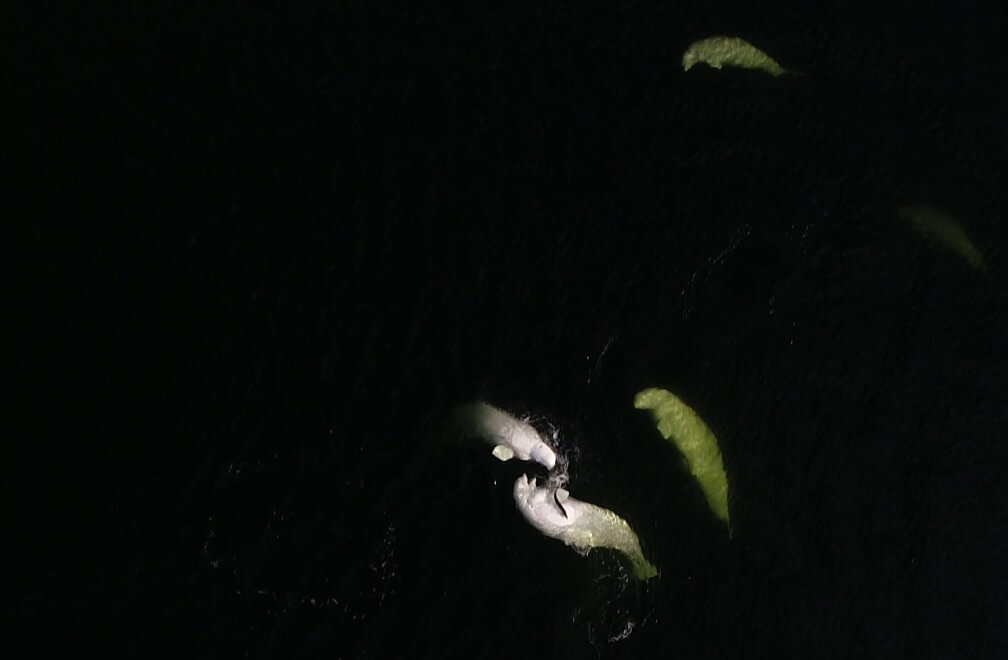July 3, 2019: The BpJAM is back at sea for the 2019 field season, with the same crew as last year.
The foggy morning forces us to stay docked: it’s hard enough to locate a herd in the fog, much less track it or to get a good sense of the general behaviour of the belugas. Might as well take advantage of the “bad weather” to catch up on our office work.
It’s early afternoon and the fog is dissipating from the waters of the Saguenay-St. Lawrence Marine Park. If we move quickly enough, we still have time before dark to go look for belugas. After searching for a half hour or so, we find a group of belugas downstream of Île Rouge, about mid-channel and off the coast of Baie-Sainte-Catherine. The herd numbers around forty white and grey individuals. Among them is DL1235, which GREMM has been tracking since 1990.
The group is rather difficult to approach, sometimes swimming in multiple directions, sometimes “milling”, i.e. diving repeatedly and resurfacing at the same place. The behaviour displayed by these belugas is rather interesting. On the surface, the animals actively swim, spit and vocalize.
After two hours of taking photo-ID pictures to update our “family album”, we decide to launch the drone to get a better idea of what’s going on under the surface.
First we observe sociosexual behaviours: pelvic thrusts, rubbing, etc. Then, what was hard to document from the boat becomes obvious: for the first time, we have a bird’s eye view of belugas hunting for fish.
In this excerpt, we can observe a small group of about ten individuals. Among them, three adults near the middle of this video stand out from the rest. First, one individual is hunting a medium-sized fish. But just as the fish seems to be getting away, it finds itself trapped by two other belugas watching the scene. Ultimately, it is by slipping along the right flank of a beluga that it manages to dodge two attacks.
We still know very little about belugas’ prey. These snippets of surface hunting footage provide us with new information.
Preliminary identifications of the week:
DL0235
DL2417
DL2286 Miss Frontenac, adopted by Fairmont Le Château Frontenac
DL9013
DL1396 Aquabelle, adopted by Aquarium du Québec
DL2377






